|
| |
Volume 2, Number 14 |
|
'There's a Jewish story everywhere' |
Wednesday, January 16, 2008
|
|
| |

JEWISH
COMMUNITY


|
|
Today's Postings
Sheila Clapkin in Tarzana, California: Pilgrimage to Uman: Searching for absolution at Rabbi Nachman's grave
Donald H. Harrison in San Diego: Making Trouble will make you laugh
The Week in Review
This week's stories from San Diego Jewish World
|
|
| |
|
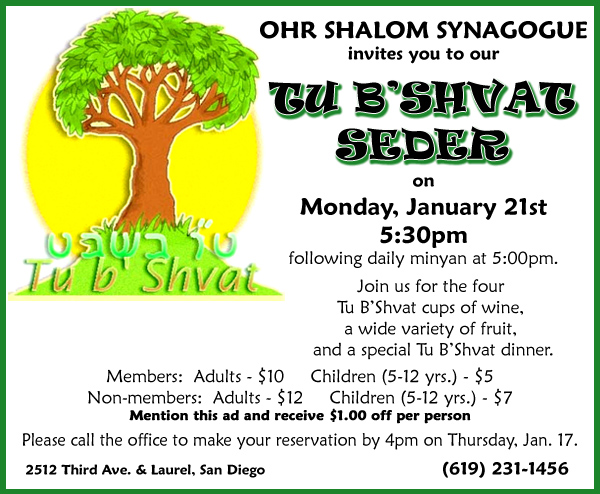
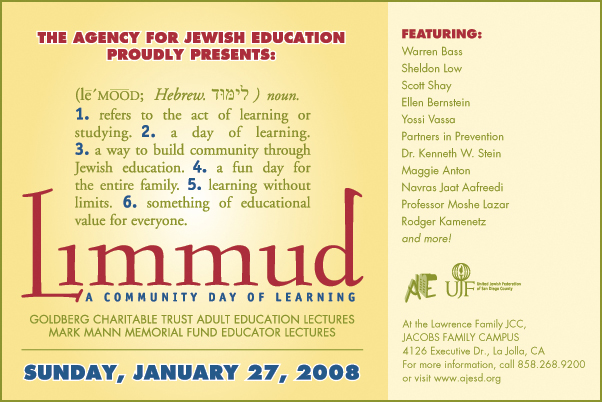

JEWISH MEMORIES
Pilgrimage to Uman: Searching for absolution at Rabbi Nachman's grave
By Sheila Clapkin
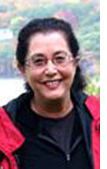 TARZANA, California—It doesn’t matter how I got to Kiev and it doesn’t matter what I did there. What does matter is that I was on my way to Uman. Uman? Why would anyone travel 3 1/2 hours from Kiev through the agricultural countryside of the Ukraine, hour after hour in 99 degrees with 99% humidity in a car that sputtered, spouted and stalled every 40 to 45 minutes? I didn’t know why I was on this road, but I was. I had no real idea what to expect, except for the fact that I was on my way to Uman. TARZANA, California—It doesn’t matter how I got to Kiev and it doesn’t matter what I did there. What does matter is that I was on my way to Uman. Uman? Why would anyone travel 3 1/2 hours from Kiev through the agricultural countryside of the Ukraine, hour after hour in 99 degrees with 99% humidity in a car that sputtered, spouted and stalled every 40 to 45 minutes? I didn’t know why I was on this road, but I was. I had no real idea what to expect, except for the fact that I was on my way to Uman.
One night about a year ago I happened upon a website that told of a gravesite in
Sheila Clapkin
Uman, Ukraine, of Rabbi Nachman of Bratzlav (April 4, 1772 – October 16, 1810), the great-grandson of the founder of Hasidism. I learned of the wisdom and the teaching of this Rebbe and how his teachings have carried on for two hundred years after his death. Rebbe Nachman of Breslov promises that whoever comes to his gravesite and recites the Ten Psalms of the Tikkun K”lali and gives as little as one cent to charity, will be cleansed and protected.
I became convinced that I had a calling to go to this Rebbe’s grave to ask forgiveness for the remembrances of the prejudices towards me so many times in my life for being Jewish and be absolved from my unforgiving attitude towards temple life stemming from the fact that the Rabbi would not let me participate in the confirmation of all of the girls in my class. We had communal confirmations in those days at that temple, not the modern day Bat Mitzvahs. I was called to the Rabbi’s office, fearing the worst and knowing this was something out of the normal; I crept inside his office with great trepidations. I was well behaved and was a good tutor for the rest of the girls when they needed a push along the path to our confirmation. Bar Mitzvah was for the boys and we, all of the girls, twelve of us were dedicatedly happy to be the first confirmation class in our temple. All of us were just turning thirteen.
We studied in an upstairs room of the temple and became best friends. Every Tuesday, Thursday and Sunday, we would bounce up the stairs, anxious to hear from all of our friends. We were in a time of our lives of pure trust, pure love and innocence. We had little social acceptance in our outside lives, but inside those hallowed walls we were one with ourselves.
Our temple was not an orthodox temple but held to many of their rigid rules. Women and children were delegated to the upstairs, and they did not even think of wandering the ground level. We did have to enter the temple on the lower floor and descend to use the restrooms, we helped in the kitchen, but we never enjoyed the full breadth of the lower levels.
I dawdled getting to the Rabbi’s office. He was busy with someone else, so I waited. I began to feel very nervous and knew something was going to happen. I picked at my nails and scratched at my elbows; the tic in my face went on a rampage. He finally turned his attention to me and paused for what seemed like hours. I could tell he was composing his thoughts, organizing what and how he was going to say what he said. His brows closed together, he started a low groan, and I began to sweat. My mouth went dry, my glasses fogged and my heart began to beat rapidly in anticipation. The Rabbi looked at me with such distance, such conviction. He said in his very thick accent, “Well, Sheila, you will not be confirmed with the rest of the girls.”
“What? Why not; what happened?”
“It is my decision that the cut-off date for confirmation girls is August 31st, and your birthday is September 19th. That means you are not eligible.”
“But Rabbi, I can speak and write Hebrew better than all of them. I help them. You can’t leave me out of the group.”
“I can, I just did and you will have to come back for another year. You will be confirmed next year.”
It felt like bomb exploded inside of me. All of the venom I had felt brewing, boiling, fermenting, in me spewed out in a blast. I yelled my childish frustration, “I hate you. I hate this temple.”
I ran from that temple and ran all the way home with tears running and heart breaking. On the way home, I was talking with God, asking questions I wanted answered, answering them myself, screaming out obscenities, not really meaning any of it, but feeling quite powerful by the time I reached home. My parents were pillars in the temple, and I knew I had some pretty big explaining to do. I knew the Rabbi would spill all that I had said and give my parents an earful of their obscene daughter’s mouth and her unladylike manners. I didn’t care by then, because I was never going back into that temple, but I also knew that I would be the best Jewish person I could be on my own without a temple. I knew that I was not giving up being Jewish or Judaism, just the ways of this temple and the decision of this Rabbi.
I began to think in earnest about my journey to Rabbi Nachman’s grave and wondered would I ask the Rebbe, if my parents knew when they moved to that little town that I would be the only Jewish girl anyone had ever seen? Did they know when they put me into school that I would be target practice for future anti-Semites? They had many clubs when I got to high school. They had band, orchestra leadership, the chess club, the radio club, varsity baseball, varsity swimming, gymnastics, tennis, cross country, varsity football, the letterman, future engineers of America, future teachers of America, future medics, future hostesses of America, but the club with the most members was the future anti-Semites of America. No one from this club had their pictures taken for preservation in the annual book of memories and no one from this club even knew they were members. Did I have any good memories as I grew up Jewish, oh yes, but I more strongly remember the ones that hurt.
Last year I visited Auschwitz-Birkenau, this year, after going to Babi Yar in Kiev and standing on the rim of a ravine where tens of thousands of Jews had been shot and allowed to fall into a common grave, I began to feel foolish for my angst over the prejudices I felt growing up in my small California town. Our temple consisted of families from eight neighboring cities. I loved my temple because it was the only place in the outside world where I felt accepted, loved, respected and understood. The Rabbi’s decision not to allow me to be confirmed with my friends temporarily tangled my Jewish mind. I was the only Jewish girl in my elementary school; my brother was to enter three years later along with the Rosen boys. I feel guilty that I needed absolution from a Rebbe that has been dead for over 200 years for harboring the resentment towards the prejudiced treatment and inability to cleanse it from my being. I reached a decision that, I could give myself absolution and I did, but the experience planning for and traveling to Uman to visit Rebbe Nachman was a turning point and a stronghold for my Judaism.
I signed up with Youth Hostelling International for the tour to Uman. I explained that I am a senior citizen, not a youth and they said they were available to all travelers. Remember them when you need help traveling. They handled some the difficulties traveling to Uman with ease, grace and with great expertise. I was picked up at 7:30 a.m. The car would not start. After repeated tries, the engine turned over and we pulled out of an alleyway in downtown Kiev heading for the highway leading to Uman. Luckily the driver spoke English, but unluckily he did not know anything much about Uman except that we were to meet a guide in front of the gates to Sofia’s Park. After a lovely, long ride through agricultural lands we turned into a parking lot, which faced the gates leading to a fairyland park with cascades of lakes, sky-blue ponds, fountains, grottoes, antique sculptures, waterfalls and six miles of intense walking ahead of me. The guide approached by saying, “Welcome to the park voted the most beautiful in the universe.” I was anxious to get to Rabbi Nachman’s gravesite and asked why we were here in Sophia’s Park. The guide stated that this was included in the tour I had ordered. I learned something in the Ukraine and that is when you ask for something and when you get it, it is yours. You go with the program designed for you and usually there are no deviations. The walk in the park lasted six hours. The heat was oppressive and there was not another tourist in sight. When the tour ended I realized that the guide was right, Sophia Park is the most beautiful park in the universe, and although I was spent physically, and was astounded by the beauty, I was especially pleased to learn that Rabbi Nachman used to walk in this park when he lived in Uman.
After a brief rest, we began our short journey to the gravesite. When our car arrived, immediately we heard Breslov songs blasting from speakers giving the center of this little town a festival feeling. The car was parked and within a short walking distance, I spot gates and armed guards. Is this Rebbe Nachman’s grave? Why such security? I feel safe. I didn’t know then about this village being the site of awful massacres of tens of thousands of Jews. In the late 1800’s, the Cossacks swept through Jewish settlements in the Pale, killing Jews, looting and destroying villages. I need not wonder anymore why there are armed guards. I was not allowed to enter the Synagogue that holds the grave of Rabbi Nacnman. I could not understand the full extent of what was happening, so I just held on to one of the bars of the gate guarding the gravesite and began to sob uncontrollably. I was sobbing for all of my petty dreams of being cleansed of my chains, sobbing because I had been denied my dream. I had traveled so far now to be denied, I am not used to being denied. A little old man began to speak to me in a friendly kind voice in a language I did not understand. He began ushering me softly to the side of the building. Nothing. “Nothing is here. Why are you doing this?” I asked. He just kept nodding and ushering me gently now towards the back of the building where more armed guards stood. He gave me a small coin and patted it into my hand. He opened my hand pointing to the coin several times. It was important to him that I realize he had put the coin in my hand. His warm hand was constantly moving me and guiding me on to his destination. He put something on my head and gained entrance for me to continue up the stairs on my own.
I climb the few stairs and enter a new dimension. Women. Everyone in this partitioned area is a woman. They hurried up to me, dried my tears and began to ask questions. When I answered in English, they called on one of the younger women to translate. They found out that I had traveled from California to be with them. They asked why I was wearing pants. I told them that I did not know and did not understand where I was going when I began this journey. Yes, I had completely forgotten about the orthodox rule of women being separated from the men during worship. They smiled and I was thunder struck by their beauty. Each smile sparkled like an orthodontic specialist had expertly crafted it. Each face was deeply chiseled with an artisan’s skill and the skin covering their chiseled bones was a deep rich color of the earth. They embraced me and held up the bank where I was to drop my charity. The guide and driver had locked my purse and camera in the trunk of the car and I was without money, or was I? I instantly remember the little old man giving me a coin. I fished it out of my pocket and it flickered and flashed as I put it into the box amid nods and sighs. Then, there was the reciting of the Ten Psalms of the Tikkun K”lali. I sat for long moments looking at the women lying across the shelf of the grave. As I know it now, there are two shelves coming together in a triangular manner, the Rebbe is buried beneath the triangular arch. One side services the men and the other side services the women.
Facing the shelf on the woman’s side and starting left to right, one woman had a folded wedding gown on the shelf under her hand and she was wailing and talking with the Rebbe. I could not begin to understand her words but her motions and her wailing led me to believe that something had gone terribly wrong with her wedding. The next woman had pictures of children, which she kept moving in a circular motion clockwise. She said something over each child and then moved the photo on as she spoke again about the picture placed at noon. Another woman was just standing there with her elbows on the shelf and her head in her hands. Several women were sitting towards the front actually eating what I would call chips. It looked like chips and dip to me, but I know it was just food I do not have words to describe. The pews were dotted with women of various ages and the children that were there never uttered a peep. When I stood to replace my book on the shelves, I heard loud speaking of words I did not understand until I heard California, loudly and clearly. All of the women moved aside from the shelf and my body was splayed out onto the Rebbe’s grave. I once again felt guilty for my petty problems with prejudice and was able to summon up the courage to apologize to those who have suffered the terrors and murders of their people, and I felt guilt for bemoaning the fact that I had been made to sit in the back of the classrooms and having been denied the wearing formal gowns of the Rainbow Girls and the robes of the Jobs Daughters. The girls who were members would come to school with photos of themselves in their magnificent gowns taken during ceremonies. I did so want to wear one of those gowns and be a part of those ceremonies even though I did not know what they preordained. Carol’s gown was aqua net and Winnie was so gifted that she made her own. They wore those gowns every week and seeing them hang in their closets, I would just melt with envy. The group leaders told me that I was not able to join Jobs daughters even though I had a proper Masonic relationship because they had no place for Jewish attendants. I do not believe that Rainbow Girls has a creed to ban Jewish members, but they did specify that you had to have faith in a Supreme Being. Although Rainbow is not a religious organization, in my hometown their Supreme Being was not one in the same with mine.
Dear God, I am sorry for not having stood up for myself and for not praying much earlier for all of those atrocities that others have suffered on this very spot. The women of Uman and the visitation at the place of Rabbi Nachman’s burial have given me answers to who I am, an inspiration and guidance to live and learn wisdom, plus gain a spiritual light to continue my search for a meaningful Jewish life and to preserve it for those who are yet to come.
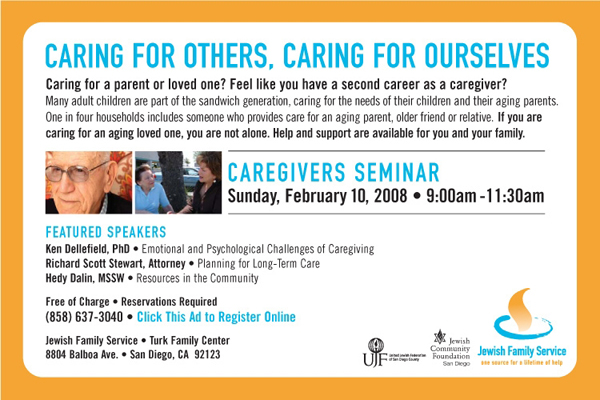 
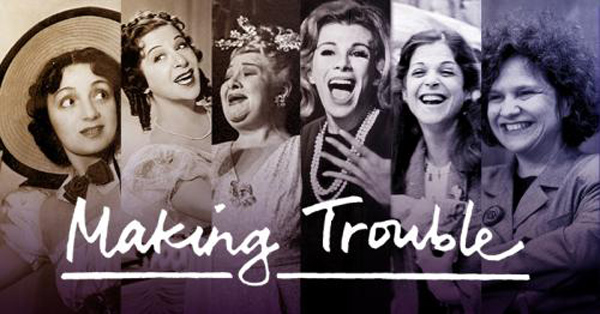
SIX STARS OF THREE GENERATIONS—Making Trouble, the stories of funny women, from left,
Molly Picon, Fanny Brice, Sophie Tucker, Joan Rivers, Gilda Radner and Wendy Wasserstein,
will be the closing night selection, Sunday, February 17, of the San Diego Jewish Film Festival.
THE JEWISH CITIZEN
Making Trouble will make you laugh
By Donald H. Harrison
 SAN DIEGO—There is an old gag about the two Jews who are standing in front of the Czar's firing squad. "Excuse me," said one, "but could we please have blindfolds?" The second one shushed him. "Don't make trouble!" SAN DIEGO—There is an old gag about the two Jews who are standing in front of the Czar's firing squad. "Excuse me," said one, "but could we please have blindfolds?" The second one shushed him. "Don't make trouble!"
Many of us growing up heard the same injunction: "Don't make trouble;" don't draw any embarrassing attention to ourselves, especially not in front of our Christian neighbors. Sha Shtill.
Donald H. Harrison
And what went for nice Jewish boys went double for nice Jewish girls. You simply must not make a spectacle of yourself! Don't give them (the non-Jews) any ammunition. Nevertheless, some Jewish boys became comedians, violating this Eleventh Commandment. Their stand-up comedy in the Catskills and in New York City vaudeville often targeted Jewish women. In their jokes, mothers inflicted guilt manipulatively, and wives were red-hot while spending but frosty cold in the marriage bed.
The premise of this 85-minute documentary by a team of two women and two men (Gail Twersky Reimer, Rachel Talbot, Philip Shane, and Joel Goodman) is that some very funny Jewish women also were willing to violate the injunction against "making trouble" and created mirth, joy and outright hysterics in the process.
Making Trouble profiles Molly Picon, Fanny Brice, Sophie Tucker, Joan Rivers, Gilda Radner and Wendy Wasserstein—five performers and one playwright. It stitches together their six individual stories by having four stand-up comics sit down and schmooze at Katz's Deli on the Lower East Side of New York City. Jackie Hoffman, Cory Kahaney, Jessica Kirson and Judy Gold share reflections and shtick as the story moves from one featured comedienne to the next.
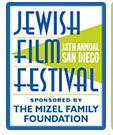 As any good festival wants to "leave them laughing," Making Trouble will be the closing night presentation of the 18th Annual San Diego Jewish Film Festival at 7:30 p.m., Sunday, Feb. 17 at the AMC La Jolla. Director Rachel Talbot will be on hand to discuss the work. As any good festival wants to "leave them laughing," Making Trouble will be the closing night presentation of the 18th Annual San Diego Jewish Film Festival at 7:30 p.m., Sunday, Feb. 17 at the AMC La Jolla. Director Rachel Talbot will be on hand to discuss the work.
In dealing with the career of Molly Picon, Making Trouble's documentary team fell in love with the symbolism of the movie, Yiddl mitn Fidl, a story of a poor Polish girl who can play the violin but because performing is not girl's work, she dresses as a boy and wows audiences throughout Eastern Europe. (A poignant note was that the film was made in Poland prior to the Holocaust.) The part played by Picon was also the story of Picon: she too went into what was considered men's work, blazing a trail for the funny women who followed. The movie noted that Picon dressed up as a Yiddishe boy long before Barbra Streisand did so in the movie Yentl.
Streisand, of course, gained stardom in another movie, Funny Girl, which dealt with the life of the second comedian treated in the documentary: Fanny Brice. We learn that although she performed on stage with a Yiddish accent, it was a put-on. She knew perhaps 100 Yiddish words total, and the accent was taught to her by her friend, Irving Berlin. Brice became an incredible star, and observed memorably: "I've been poor and I've been rich—rich is better!" The documentary credits her with being the first woman performer to throw herself into a comedic stage role without worrying whether it would somehow compromise her femininity.
On moves the documentary to that woman who billed herself as the "Last of the Red Hot Mamas," Sophie Tucker, who left her baby with her Orthodox family in Connecticut to pursue a stage career in New York, notwithstanding her parents' and relatives' condemnations that she was acting no better than a prostitute--talk about making trouble! Tucker developed a naughty act signing suggestive songs that were trailblazing in that they strongly implied that women enjoyed sex (at the time, it was considered quite daring to say so). A sample lyric: "I've had them short, I've had them tall: I've had them all."
Eventually Tucker's following became so large that even her family and their friends in Hartford relented, turning out in droves for her triumphant return to her home town.
Joan Rivers' frank routines about her body—referring directly to her breasts and her vagina—took women's humor to another level, each performer of the documentary seemingly becoming successively bolder in the material she would present and her willingness to break taboos. Among her most enthusiastic fans were gay men, with Rivers commenting that "gays love strong women" because they share the same sensibilities. Her big break came when she made her debut in the slot for the last guest of the evening on the Johnny Carson show. Her humor convulsed Carson, who whispered to her she'd be a star. Before long she was a regular substitute host of the program.
Gilda Radner was a regular on Saturday Night Live, whose zany sketches often drew on Jewish material. One spotlighted in the documentary was a routine about "Jewess Jeans," which can help women of other minority groups achieve upward mobility. One unfortunate reason she could fit into genes so nicely was that Radner had bulimia, an eating disorder in which victims compulsively binge in their eating and then purge by forcing themselves to vomit.
She married comedian Gene Wilder, but the laughing that the world expected from such a match was cut short by cancer. While she was fighting the disease, Radner broke another taboo—joking about it on the air—but even Radner couldn't make cancer funny. Comedian Gary Shandling suggested that she was like a girl who falls while ice skating, andthen makes faces pretending that she had intended to fall all along.
Wendy Wasserstein was the final funny woman treated in the documentary. By becoming a female playwright she also was a trailblazer, recognized in 1989 by the theatre world when her Heidi Chronicles won the Tony Award. The documentary lavishes attention on another of her plays, The Sisters Rosenzweig, particularly the character "Dr." Gorgeous Teitelbaum, a talk radio show personality who was made famous on Broadway by Madeline Kahn. Such a character might have been a cliché but for the fact that both Wasserstein and Kahn, conscious of the stereotyping of Jewish women, wanted to give the character her dignity.
So, nu, again with the making trouble?


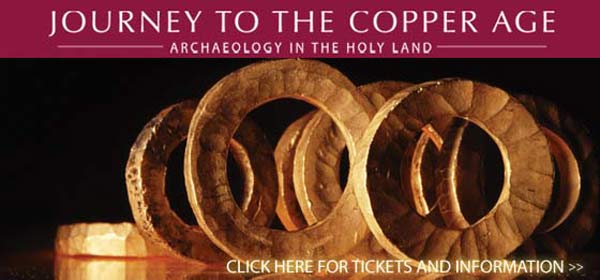


SAN DIEGO JEWISH WORLD THE WEEK IN REVIEW
Donald H. Harrison in San Diego: The Jewish Americans: 3-part PBS series offers 'history commenting on history'
Alexa Katz in San Diego: Into the Wild: A movie that delivers its title
Gaby Maio in San Diego: A ride into San Diego Jewish history
David Strom in San Diego: PTSD also affected survivors of the Shoah
Monday, January 14, 2008
Dov Burt Levy in Salem, Massachusetts: Jewish "angles" in the presidential primaries
J. Zel Lurie in Delray Beach, Florida: Did Bush have a vision or just a dream?
Norman Manson in San Diego: Dreams in Torah—where are they today?
Sheila Orysiek in San Diego: How Fiddler on the Roof keeps his balance
Sunday, January 13, 2008 (Vol. 2, No. 11)
Shoshana Bryen in Washington: Just what did Bush say in Israel?
Rabbi Baruch Lederman in San Diego: How our shortcomings can unite us
Rabbi Leonard Rosenthal in San Diego: Mitzvot easier done than other obligations
Ira Sharkansky in Jerusalem: Is Olmert only play acting for Bush
Friday-Saturday, January 11-12 (Vol. 2, No. 10)
Judy Lash Balint in Jerusalem: Bush security proved a tourist attraction
Bruce Kesler in Encinitas, California: Gandhi's grandson blames Jews for 'culture of violence' in the Middle East
Ira Sharkansky in Jerusalem: Baroque music lovers brave Bush security
Thursday, January 10, 2008 (Vol. 2, No. 9)
Judy Lash Balint in Jerusalem: Bush shuts down Jerusalem traffic
Shoshana Bryen in Washington, D.C.: Bush must make case for Iraq to Arabs
Donald H. Harrison in Coronado, California: Cecilia Kipperman is a Coronado legend
Bruce Kesler in Encinitas, California: President Bush should see Sderot
< BACK TO TOP
|
|
| |
|
|
|
| |
|
|
|
| |
|
|
|
|
| |
|
|
|
|
| |
|
|
|
|
| |
|
|
|
|
|
|

